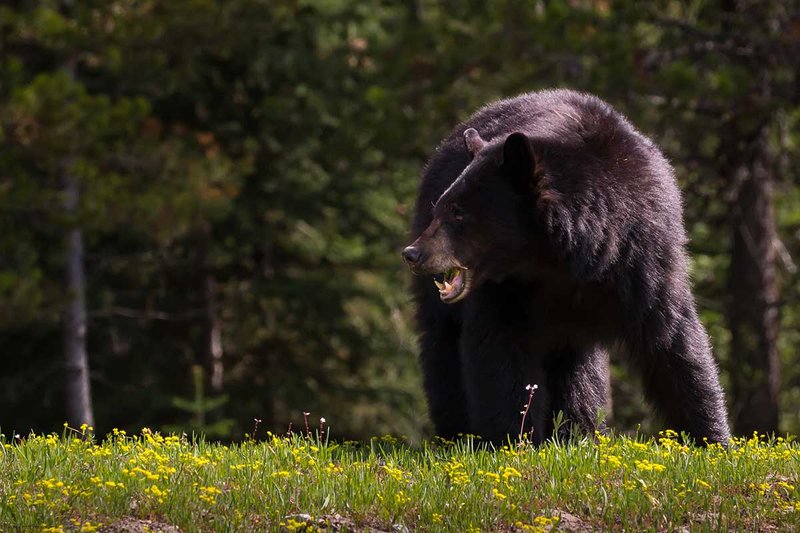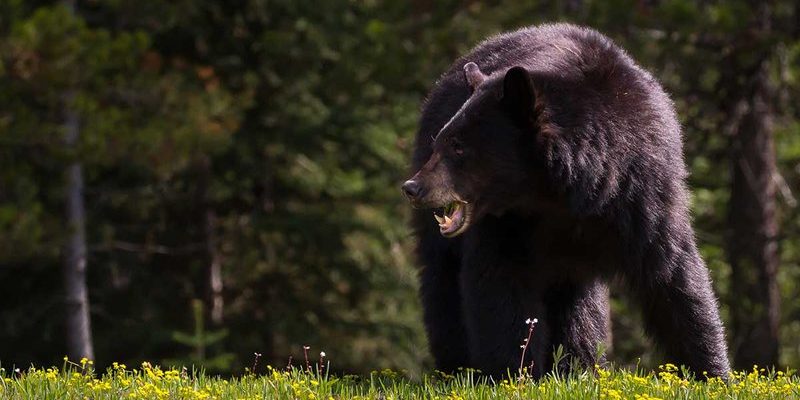
Let’s break it down over a cup of coffee, shall we? Imagine navigating this situation is like tuning a remote control. It seems like a simple task until you realize you’ve clicked the wrong button. Just as you’d troubleshoot your remote to get the right channel, you can follow specific steps to handle a bear encounter safely and calmly. There’s no need to go into full-blown panic mode; you’ve got this!
Understanding Black Bear Behavior
Before you even think about what to do, it’s essential to understand a bit about black bear behavior. Unlike their grizzly cousins, black bears are generally less aggressive. They prefer to avoid confrontation and will often retreat if they sense humans nearby. But every bear is a little different, and there are times when they might feel threatened or curious.
Black bears are omnivorous, meaning they eat a mix of plants and animals. This diet can lead them to foraging near trails or campsites, especially in late summer and early fall. If you spot one, it might be digging for berries or rummaging through human food. Remember, a bear that’s foraging is usually more focused on finding food than on you.
Understanding this natural behavior can help you recognize that a bear isn’t always looking for a fight. But even friendly bears can be unpredictable, so remain cautious and prepared.
Stay Calm and Assess the Situation
Your first instinct might be to panic, but staying calm is crucial. Take a moment to assess the situation. How close is the bear? Is it aware of you? These factors will influence your next steps.
If the bear seems unaware of your presence, it’s best to remain quiet and slowly back away. Any sudden movements could startle it, and we definitely don’t want that. If you’re within a close range—not ideal—try to make your presence known by speaking in a calm voice. Bears are more likely to react to sudden noises, so keep your movements slow.
On the other hand, if the bear looks agitated or starts approaching you, it’s time to take action. This is where your earlier assessment will pay off.
Make Your Presence Known
So, how do you let a bear know you’re there without alarming it? The key is in your voice. Start by speaking softly but firmly, saying things like, “Hey bear!” or “Go on, buddy!” This sounds silly, but it helps the bear recognize you as a human, not a threat. They usually panic and run away at the sound of a human voice.
If the bear continues to approach, it’s time to elevate your game. Stand tall—don’t crouch or run. You want to appear large and confident. Waving your arms can help, but don’t overdo it; you’re not trying to dance here. Just be cautious.
Know When to Back Away
If the bear shows signs of aggression—like huffing, growling, or swatting the ground—this is not the time to play hero. Backing away slowly is the best option. Avoid turning your back on the bear; this could provoke a chase reaction. Instead, maintain your calm demeanor and move sideways. This way, you keep your eye on the bear while putting distance between you.
If you’re hiking with others, gather together. There’s safety in numbers, and bears are less likely to approach larger groups.
What to Do If the Bear Approaches
Sometimes, despite your best efforts, a bear might get a little too curious about you. If it seems intent on coming closer, here’s what to do:
1. Stand your ground—never run! Bears can run faster than you, and fleeing may trigger a chase response.
2. Make yourself look bigger—raise your arms above your head or open your jacket wide.
3. Use bear spray if you have it. This can deter the bear if it comes too close.
Being prepared with bear spray is crucial if you hit the trails in bear country. Just like you might carry an extra battery for your remote, having this spray can make a difference in a close encounter.
Understanding Bears’ Defense Mechanisms
Often, people assume that black bears will attack unprovoked. However, it’s helpful to know the signs of a bear’s defense mechanisms. Bears typically try to avoid conflict, but if they feel threatened, they may act aggressively.
For instance, a bear standing on its hind legs is often just trying to get a better look or smell. It’s not necessarily a sign of aggression; it’s more like it’s doing some bear-version of “What’s that?”
Conversely, if a bear makes a bluff charge—running toward you and then stopping—don’t mistake it for an invitation. It’s a warning. The best response is to hold your ground and stay calm, letting the bear know you’re not a threat.
When to Use a Tree as an Escape Route
Climbing a tree might be an immediate thought when faced with a bear. However, this isn’t always the best course of action. Black bears are excellent climbers! If you have no choice but to get away from an aggressive bear, look for a sturdy tree. Still, climbing should be a last resort—make sure you assess the area first.
Before attempting to climb, ask yourself: Is this the right tree? Is it sturdy enough? Can you get high enough to keep the bear at bay? If you decide to climb, keep an eye on the bear. Remember that bears tend to lose interest once you’re out of reach, but you’ll want to wait until it safely wanders away before climbing down.
Encountering a black bear can be a thrilling experience, but knowing what to do can mean the difference between a safe hike and a risky situation. Always stay calm, assess the situation, and follow the steps we outlined. Remember, bears are part of the beauty of nature; respecting their territory is key.
Treat each encounter with respect and care. With the right knowledge, you can navigate these situations with confidence, making your outdoor adventures enjoyable and safe. So next time you hit the trails, bring that bear awareness along—just like you’d take your trusty remote for those cozy nights in. Now, go out there, enjoy nature, and remember to keep your distance from our furry friends!

